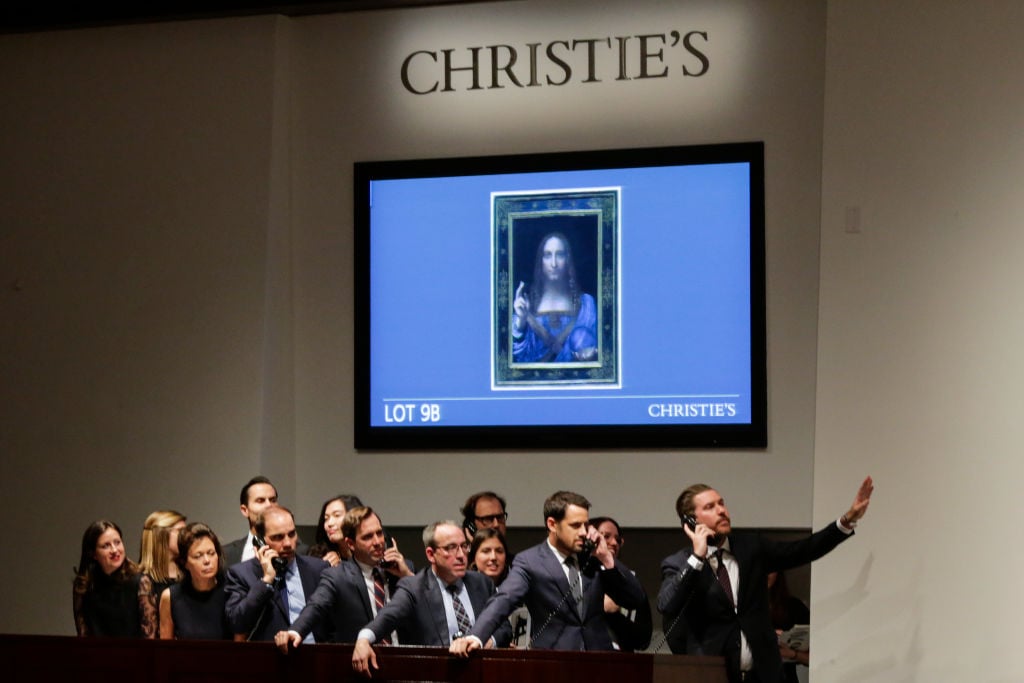
After a two-year slump, global auction sales have rebounded, increasing by 25 percent in 2017, according to a new report from Art Tactic. The London-based art market analyst surveyed 2017 sales data (excluding online auctions) from Christie’s, Sotheby’s, and Phillips.
According to the findings, the art market is making a comeback thanks to strong sales in the post-war and contemporary segment, a comeback in the Impressionist and Modern market, gains in the Asian markets, and the sale of a record-shattering Old Masters painting.
In total, the houses sold $11.21 billion in art last year, with the post-war and contemporary segment accounting for the largest share of the market at 29.3 percent of global auction sales. Impressionist and Modern art came in second with 21.5 percent of the market, up from 15.3 percent in 2016. That was followed by Chinese and Asian auctions, which totaled $1.74 billion (compared with $1.46 billion in 2016).
All three houses reported positive growth, though Christie’s remained the market leader thanks to the $450 million sale of Leonardo da Vinci’s Salvator Mundi, which helped boost sales growth by 34 percent, totaling $5.89 billion. (Christie’s final quarter alone, which included the sale of Salvator Mundi, raised $2.81 billion).
Meanwhile Sotheby’s CEO Tad Smith’s recent restructuring and acquisitions program seems to have proved fruitful, as the house reported a 15 percent increase in auction sales, totaling $4.69 billion in 2017.
Even though Phillips’s parent company, Mercury Group, has invested significant resources in staff and guarantees, the house remains a distant third, though it did report a 28 percent increase in sales last year, totaling $624 million. (The house managed to wrestle 0.1 percent market share from its rivals increasing from 5.5 percent in 2016 to 5.6 percent in 2017).
Geographically, New York remains the most important auctions marketplace with 48.7 percent of transactions taking place in the American city. London maintained its position as the second-largest marketplace with 24.2 percent of sales (compared to 25 percent in 2016), though a falling pound offsetting concerns over Brexit. Finally, Hong Kong kept its status as Asia’s most important marketplace, with 15.6 percent of sales taking place in the city-state.